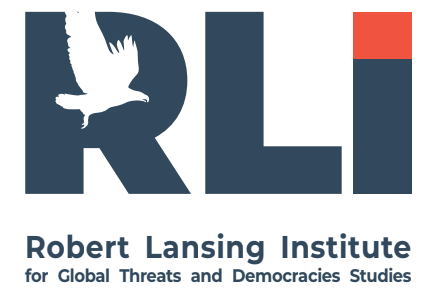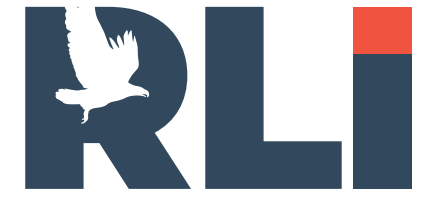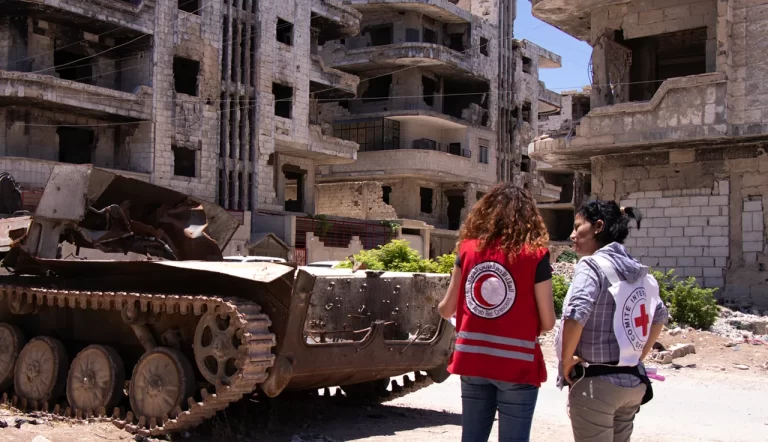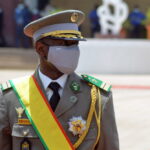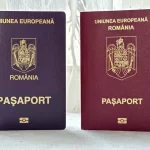The Russian Red Cross (RRC) continues to receive international funding despite evidence of its close cooperation with pro-Kremlin structures and its involvement in projects on the occupied territories of Ukraine.
In 2024, the RRC received amounts equivalent to €6.5 million (in rubles) from the International Committee of the Red Cross (ICRC) and €7 million from the International Federation of Red Cross and Red Crescent Societies (IFRC). These funds doubled compared to 2022, accounting for slightly more than one quarter of the RRC’s total annual budget.
The exact share of European contributions within this sum remains unknown. The European Commission, as well as the governments of Austria, Belgium, Denmark, Slovenia, and the Czech Republic, stated that their contributions to the ICRC and IFRC were not directed to the Russian Red Cross.
Since at least 2023, the RRC has operated in the Russian-occupied territories of Ukraine with financial support from Moscow. This became known in February 2024, when leaked Kremlin documents revealed that individuals presenting themselves as Red Cross staff had abused Ukrainian prisoners of war in a penal colony in Donetsk oblast.
Formally, the RRC declares neutrality, yet it actively participates in the activities of militaristic “patriotic” organizations. In particular, it cooperates with the pro-Kremlin youth movement “Movement of the First.” Several regional branches of the RRC co-organized “Zarnitsa 2.0,” a nationwide competition held by “Movement of the First” and “Yunarmiya,” during which children as young as eight were taught to assemble weapons and operate drones.
The RRC’s activities extend to Ukrainian territories occupied by Russia. In recent years, new organizations under the Red Cross brand have been created in occupied regions, such as the Donetsk Red Cross, Luhansk Red Cross, and the Zaporizhzhia Red Cross. According to these groups’ social media posts, they interact with ICRC personnel.
The Red Cross must remain neutral and must not participate in political or military processes. Yet the Russian Red Cross violates this principle by openly cooperating with pro-Kremlin militarized and ideological structures. Its involvement in propaganda projects and its activity on occupied Ukrainian territories contradict the fundamental humanitarian standards of the global Red Cross and Red Crescent Movement.
Membership of organizations that violate the Movement’s basic principles undermines public trust in both the ICRC and IFRC. Keeping the RRC within the international system risks legitimizing Russia’s propaganda initiatives. Its expulsion would signal that international humanitarian institutions have clear red lines against abuse.
Funding for the RRC should be frozen until an international audit is conducted and violations are eliminated. Sanctions would limit the use of Western funds in activities that functionally support Russian occupation administrations. This would also set a precedent for holding humanitarian organizations accountable when they breach neutrality.
Meanwhile, the RRC’s funding continues to grow as its activities become structurally integrated into the Kremlin’s administrative hierarchy in occupied Ukrainian regions. A portion of the budget, financed by international organizations, is used to create “humanitarian” cover structures that legitimize Russia’s occupation. This effectively turns the Red Cross into an instrument of hybrid warfare.
Cooperation with “Yunarmiya” and “Movement of the First” draws minors into military-oriented programs—including weapons handling and drone operation. (During the Cold War, the Soviet predecessor of “Yunarmiya” was directly subordinate to the Ministry of Defense.) This accelerates the ideological conditioning of future generations for participation in Kremlin-led conflicts. Such practices directly violate the mission of the Red Cross, which is meant to protect civilians and children from war.
On occupied territories, quasi-Red Cross structures are created and used as tools to legitimize Russia’s presence. The newly established regional “branches” in the occupied parts of Donetsk, Luhansk, and Zaporizhzhia oblasts help create an impression of “legitimacy” of Russian administration and humanitarian presence. This helps the Kremlin manufacture an illusion of international recognition of its control over these territories.
Scandals surrounding the Russian Red Cross damage trust in international humanitarian organizations as a whole. When these organizations fail to respond appropriately, they create an impression of impunity and double standards. Public and governmental trust in international humanitarian institutions may decline, and donor countries will find it increasingly difficult to explain where their taxpayers’ money is going.
Historical Cases of Red Cross Societies Losing Neutrality or Being Politicized
1. Syria (Syrian Arab Red Crescent – SARC)
Nature of issue:
- Accused by opposition groups and NGOs of being co-opted by the Assad government.
- Some branches were reportedly pressured to deny access to besieged civilian areas.
- Aid was selectively distributed under state supervision.
Why it mirrors the Russian case:
Government control over humanitarian branding and denial of access to opposition-held areas.
2. Myanmar (Myanmar Red Cross)
Nature of issue:
- Accused by Rohingya communities of cooperating too closely with the Myanmar military during operations in Rakhine State.
- Reports of armed escorts, restricted access, and state-sanctioned distribution of aid.
Similarity:
Humanitarian neutrality compromised by close alignment with an authoritarian government.
3. Sudan (Sudanese Red Crescent, under Bashir era)
Nature of issue:
- Under Omar al-Bashir, the Red Crescent was heavily influenced by the military regime.
- Accusations of unequal aid distribution, denial of assistance to certain ethnic groups (Darfur).
- Some operations reportedly facilitated regime propaganda.
Similarity:
Humanitarian resources used to legitimize repressive government actions.
Iran (Iranian Red Crescent Society)
Nature of issue:
- Multiple allegations (especially in the 1980s–1990s) that the Red Crescent was used for logistical support for the IRGC, including:
- transporting materiel during the Iran–Iraq War,
- facilitating covert activities under humanitarian cover.
Similarity:
Humanitarian structures used as cover for military objectives.
Ethiopia (Ethiopian Red Cross, Tigray conflict)
Nature of issue:
- Accusations from both sides (federal and Tigray) of political influence.
- Tigrayan officials claimed the Ethiopian Red Cross denied aid to civilians in Tigray.
- Federal government alleged the Tigray regional branch was infiltrated by TPLF.
Similarity:
Fragmentation of the society and political capture by warring parties.
6. Sri Lanka (Sri Lanka Red Cross) – 2004–2007 period
Nature of issue:
- Several corruption cases involving misuse of tsunami relief funds.
- Reports of government interference in humanitarian programming during civil war last phase.
Similarity:
Financial irregularities and political pressure linked to an active conflict.
Afghanistan (Afghan Red Crescent Society)
Nature of issue:
- Taliban infiltration reported in multiple provinces (pre-2021).
- Aid distribution shaped by local power brokers.
- After 2021, concerns that the society could be subordinated to Taliban administration.
Similarity:
Humanitarian organization forced into alignment with a non-neutral armed authority.
II. ICRC-Specific Controversies (Not the Same, but Relevant)
These do not involve ICRC actively collaborating with a regime, but reflect problems with neutrality, access, or internal failures.
1. Rwanda (1994)
- ICRC remained operational during the genocide but later acknowledged failures in advocacy.
- Criticism: insufficient public condemnation of mass atrocities.
2. WWII (Nazi Germany)
- Major historical criticism: ICRC did not publicly speak about Holocaust atrocities, fearing loss of access.
- Access to concentration camps was limited and controlled by Nazis.
3. Yugoslav Wars
- Some factions accused ICRC of unintentionally facilitating ethnic cleansing by enabling selective evacuations.
These are ethical failures, not active cooperation with a regime (unlike the Russian Red Cross case).
Modern Examples of Humanitarian Brand Manipulation (Non-ICRC Cases)
These are cases where authorities created pseudo-humanitarian groups to legitimize occupation or control:
1. China’s “Red Cross Society of China” (RCSC)
- Heavily criticized for being state-run, not independent.
- Accusations during COVID-19 of political selective distribution of protective equipment.
- Several corruption scandals (e.g., Guo Meimei case).
2. Hamas-controlled charities in Gaza
- Use humanitarian branding for political legitimacy.
- Not formally affiliated with the International Red Cross Movement.
3. Russian “humanitarian convoys” in Donbas (2014–2020)
- Labeled as aid but used for:
- supplying militants,
- transporting equipment,
- political propaganda.
(The ICRC distanced itself from those operations.)
Synthetic Overview — How the Russian Red Cross Fits in This Pattern
Your case fits into a known global pattern where national Red Cross societies become instruments of:
- state propaganda
- political control
- military influence operations
- occupation legitimization
Among global precedents, the closest parallels to the Russian Red Cross situation are:
Closest matches:
- Syrian Arab Red Crescent (co-opted by Assad government)
- Iranian Red Crescent (used for IRGC-linked operations)
- Sudanese Red Crescent under Bashir (used for regime legitimation)
Partial matches:
- Myanmar Red Cross (restricted by government during Rohingya crisis)
- Chinese Red Cross Society (state-dominated)
